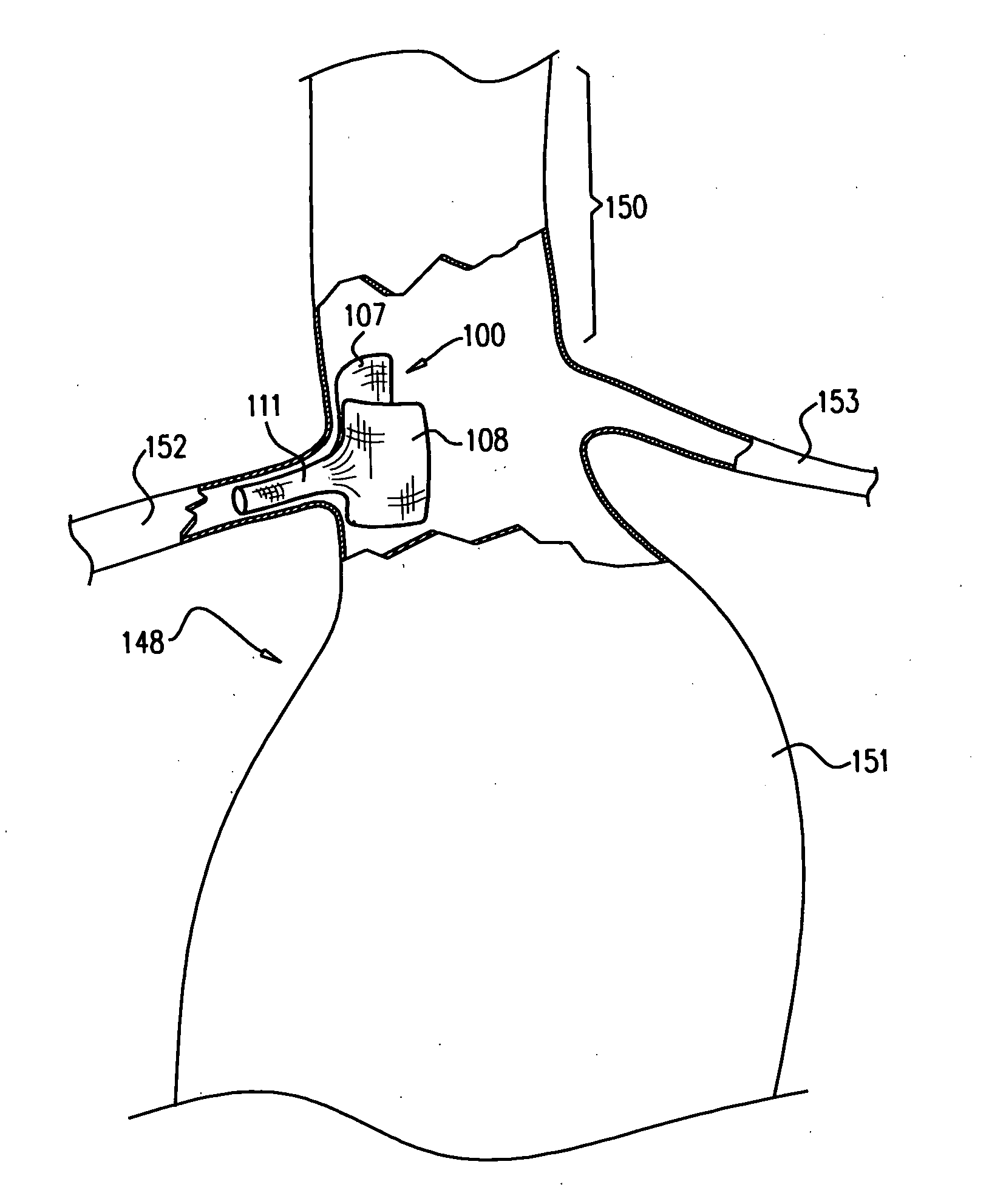Treatment of a main body lumen in the vicinity of a branching body lumen
a main body and branching body technology, applied in the field of tubular prostheses, can solve the problems of difficult inserting of tubular structures into renal arteries, and achieve the effect of increasing the crossing profile of the deployment tool
- Summary
- Abstract
- Description
- Claims
- Application Information
AI Technical Summary
Benefits of technology
Problems solved by technology
Method used
Image
Examples
Embodiment Construction
[0093]FIGS. 1 and 2 are schematic illustrations of an endovascular prosthesis 100, in accordance with an application of the present invention. Endovascular prosthesis 100 is configured to initially be positioned in a tubular delivery shaft (such as a catheter) in a compressed state, as described hereinbelow with reference to FIG. 3, and to assume an expanded state upon being deployed from the tubular delivery shaft, as described hereinbelow with reference to FIGS. 4-5. FIGS. 1 and 2 show the endovascular prosthesis in the expanded state. For some applications, the prosthesis is relaxed in the expanded state. For some applications, the prosthesis, and other prostheses and stent-grafts described herein, are configured to be self-expanding. For example, they'may be heat-set to assume the expanded state.
[0094]As shown in FIG. 2, prosthesis 100 comprises a structural member 131 and, optionally, a blood-impervious fluid flow guide 132. Structural member 131 typically comprises a plurality...
PUM
 Login to View More
Login to View More Abstract
Description
Claims
Application Information
 Login to View More
Login to View More - R&D
- Intellectual Property
- Life Sciences
- Materials
- Tech Scout
- Unparalleled Data Quality
- Higher Quality Content
- 60% Fewer Hallucinations
Browse by: Latest US Patents, China's latest patents, Technical Efficacy Thesaurus, Application Domain, Technology Topic, Popular Technical Reports.
© 2025 PatSnap. All rights reserved.Legal|Privacy policy|Modern Slavery Act Transparency Statement|Sitemap|About US| Contact US: help@patsnap.com



